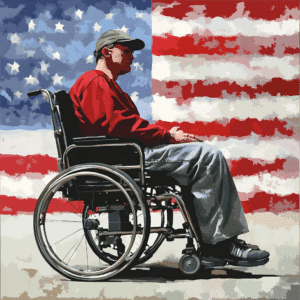As we step into 2024, the landscape of criminal justice reform has transformed dramatically. Thanks to grassroots movements, influential policy changes, and a growing awareness of systemic issues, we’re witnessing significant shifts. We can no longer ignore the pressing matters of racial profiling, police brutality, overcriminalization, mass incarceration, and recidivism. Indeed, these changes are not just minor adjustments; they’re about overhauling a system that has long favored punishment over healing.
One case study that illustrates this is Oregon’s Measure 110. This 2021 initiative decriminalized small amounts of drugs, emphasizing treatment over jail time. With funds redirected towards rehabilitation programs, it’s a bold challenge against the punitive approaches that have long reigned supreme. Across the country, similar efforts are creating ripples of hope among families touched by addiction, such as the parents supported by Mothers Against Addiction.
And let’s not forget about the important grassroots movements elevating the voices of those affected by addiction and incarceration. Their stories resonate deeply with many, shedding light on the urgent need for reform. At Mothers Against Addiction, we empower parents of children struggling with addiction or who’ve lost their child to this devastating disease, showing them they’re not alone in this fight for justice and equality.
Top 7 Innovations in Criminal Justice Reform
These programs have switched gears toward a more supportive approach. A stellar example is Philadelphia’s “Plan of Care,” which offers rehabilitation for first-time offenders, steering them clear of jail.
States like California and New York are pulling ahead by adopting restorative practices. Initiatives, such as the “Restorative Justice Initiative” in Brooklyn, allow offenders and victims to participate in healing discussions, helping rebuild communities.
As mentioned, Oregon made a bold move with Measure 110, leading the way for recovery funding instead of incarceration. This innovative approach provides a needed lifeline to many struggling with substance use.
The push for accountability led to widespread adoption of body cameras. The LAPD’s program is one notable example showing how transparency can foster community trust.
New Jersey revved up the reform engine by replacing monetary bail with a risk assessment system. This has allowed more individuals to avoid unnecessary incarceration, without pushing crime rates up.
Minneapolis’s “Community Safety” program is a fresh take on law enforcement. By embedding officers within neighborhoods, it’s possible to build bridges of trust and cooperation.
Teams like Crisis Intervention Teams (CIT) in Houston train officers to navigate mental health crises compassionately. This method significantly reduces arrests and cuts down on emergency room visits, ultimately saving public resources.
The Role of Technology in Shaping Criminal Justice Reform
As technology continues to evolve, it plays a crucial part in driving criminal justice reform forward. Artificial intelligence (AI) now examines case files and predicts recidivism rates, while data analytics help law enforcement track crime trends more efficiently. However, we must tread carefully; not all tools benefit everyone equally. For instance, predictive policing algorithms raised ethical questions about surveillance and privacy, especially in cities like Chicago.
We’ve also seen innovations like online platforms that support virtual court proceedings. This shift not only increases accessibility but also decreases the stress and stigma for those involved, helping vulnerable communities navigate the system with more ease. For families impacted by addiction, knowing that alternatives exist can indeed provide relief.
Moreover, tech-driven tools help agencies streamline processes and keep costs down. The ongoing implementation of communication technologies translates to more efficient whistleblowing and enhanced reporting systems, which speaks volumes about accountability.
| **Aspect of Criminal Justice Reform** | **Description** | **Recommended Reforms** |
|---|---|---|
| Structural Issues Addressed | Focuses on systemic problems such as racial profiling, police brutality, overcriminalization, mass incarceration, and recidivism. | Targeting racial disparities, reducing police misconduct, and improving accountability mechanisms. |
| Goals of Reform | Foster a fairer justice system where individuals are treated equitably, focus on rehabilitation, and tackle the root causes of crime, such as poverty and mental health. | Emphasizing treatment options over incarceration, especially for nonviolent offenses. |
| Sentencing Reform | Aims to change sentencing practices for more equitable outcomes. | Limit maximum prison terms to 20 years, repeal mandatory minimums, establish “Second Look” reviews, and end Life Without Parole (LWOP) sentences. |
| Plea Bargaining | Current reliance on plea deals results in over 90% of criminal cases being resolved without trial, often coercing defendants into accepting unfavorable bargains. | Reform plea bargaining processes to ensure fairer outcomes and protect defendants’ rights. |
| Youth Justice | Focus on reducing incarceration rates for youth and promoting restorative justice practices. | Improve access to diversion programs and provide support services tailored to youth needs. |
| Impact on Public Safety | Addressing major issues like mental health and addiction can contribute to overall public safety and reduce repeat offenses. | Invest in mental health programs, addiction treatment, and supportive community services. |
| Legislative Initiatives | Some states and lawmakers have begun enacting measures to reduce incarceration rates and address racial disparities, including guaranteed ballot access for justice-impacted voters. | Advocate for comprehensive legislation aimed at decarceration and justice reinvestment strategies. |
| Challenges Remaining | Violence, poverty, and racial inequality remain significant hurdles to meaningful reform. | Encourage community engagement and grassroots advocacy to drive changes in policy and perception. |
| Costs and Benefits | Overcrowded prisons create exorbitant costs for taxpayers, while effective reforms can lead to significant savings and improved community outcomes. | Cost savings from reduced incarceration rates, improved public safety, and healthier communities. |
Spotlight on Advocacy Groups and Their Impact
Organizations like the American Civil Liberties Union (ACLU) and the Equal Justice Initiative (EJI) are pivotal in this fight for reform. The ACLU’s dedication to legislative advocacy and education empowers communities with essential knowledge. Meanwhile, EJI’s tireless efforts address racial disparities and push forward changes around the death penalty.
For families struggling with the ramifications of unjust practices, their work highlights real-life stories that embody the urgency of reform. By vocalizing personal experiences, they shine a light on the systemic imbalances many face—experience that resonates deeply across varied communities.
The collective efforts of these groups and networks give a voice to the voiceless, emphasizing the need for a shift towards a just system. At Mothers Against Addiction, we stand proudly with these organizations, advocating for families coping with the complexities of addiction and loss.
Real-Life Implications: Stories of Change
Many individuals have encountered profound change through criminal justice reform efforts. Consider the story of John Smith (a pseudonym for privacy), who got arrested for drug possession in a state where laws were exceptionally strict. After participating in a diversion program, John completed a rehabilitation course. Today, he champions similar programs, demonstrating the power of a system that prioritizes healing over punishment.
Another example lies within families learning to navigate treatment options guided by organizations like Mothers Against addiction. Their stories illustrate how reform impacts recovery journeys, reminding us that hope is attainable.
These rising advocates are not merely numbers on a chart; they’re our brothers, sisters, and friends. Their tales unravel the harsh realities we often overlook, urging everyone to recognize the profound need for compassionate policies that support rehabilitation while dismantling punitive structures of the past.
The Future of Criminal Justice Reform: Challenges Ahead
As we look to the future of criminal justice reform, several hurdles still lie in our path. Resistance from factions of traditional law enforcement can often stall progress, keeping established norms intact. The allocation of resources remains a contentious issue, with debates about public safety funding continuing to ignite lively discussions.
Addressing race-based disparities in arrest statistics evokes complexities that require ongoing discourse and collaboration. Reformers must work strategically to determine the next steps, maintaining momentum despite challenges.
Moreover, meaningful sentencing reform requires creative solutions to challenges such as mandatory minimums and extreme sentencing statutes. Advocates call for specific reforms, including limiting maximum prison terms to 20 years and expanding parole opportunities. Each discussion brings us closer to a fair justice system, resonating with the values of dignity and respect.
Innovating for Justice: The Path Forward
In this ongoing narrative of criminal justice reform, collaboration among lawmakers, organizations, and affected individuals becomes vital. By continuing to highlight innovative models and responsible tech use, we can collectively shatter longstanding cycles of injustice and inequality. Working together, we can envision systems where compassion reigns, guiding those who’ve endured untold suffering.
The journey may take time, but each small step forward helps build the foundation for a fair and equitable justice system that respects every individual. This is where families struggling with addiction and loss find hope.
For those parents navigating these turbulent waters, we remind you: you are not alone. Together, we can emerge on this path, hand in hand, advocating not just for change within the system but for the lives that hang in the balance. Through collective strength, empathy, and relentless determination, we can uplift our communities and champion the fight for justice.
For more information about how we can support families dealing with these weighty issues, visit Mothers Against Addiction.
Criminal Justice Reform: Shattering Injustice and Inequality
Understanding the Basics
Criminal justice reform has gained significant momentum in recent years, with many advocating for changes that could address the glaring inequalities in our systems. It’s a big topic, full of layers and nuances, but here’s a lighter take: did you know that some states are introducing drug court programs to help individuals caught in the web of addiction? These programs aim not just to punish but to rehabilitate, often leading to better outcomes than traditional incarceration routes. This approach is crucial for families grappling with addiction issues, as it offers a lifeline to recovery. Just imagine the relief that comes with knowing there’s real help available through family leave for addiction treatment. It’s about time we prioritize compassion over condemnation.
Spotlight on Statistics
Now, here’s something to ponder: in states with active criminal justice reform, recidivism rates are often significantly lower. This is due in part to the tailored support systems that help individuals reintegrate into society. In fact, implementing these reforms could potentially save the government billions in prison costs. Speaking of costs, did you know mortgage rates can take a toll on personal finances? For families dealing with the aftermath of addiction and incarceration, knowing about current mortgage rates in NJ might just be a nugget of wisdom to help them plan a brighter future.
Current Events and Future Directions
As we move into 2024, new cases like the recent Kohberger news highlight the urgent need for reform. This and other high-profile cases can energize the push for change, reminding us that every action—or inaction—has consequences. Moreover, understanding basic treatment procedures like how long does suboxone stay in your system is crucial for those in recovery and their families. At the same time, community awareness is growing, thanks to platforms like Defy TV, which share stories of resilience and recovery. The more we engage with these stories, the stronger our resolve becomes to combat the injustices that persist in our criminal justice system.
What is the meaning of criminal reform?
Criminal justice reform means making changes to the system to fix issues like racial profiling, police brutality, and mass incarceration. It’s focused on treating people more fairly and finding better ways to handle crime.
What are the ideas for criminal justice reform?
Ideas for criminal justice reform include limiting long prison sentences, getting rid of mandatory minimums, providing more pay for medical parole, and allowing judges more leeway in their sentencing decisions. It also emphasizes the need for treatment instead of just locking people up.
Why is criminal justice reform challenging in the United States?
Criminal justice reform is challenging in the U.S. because of the deep-rooted problems like racial inequality and community pushback. There are many different opinions on how to handle crime and safety, and people often fear what change might bring.
Why is the criminal justice system important?
The criminal justice system is important because it’s meant to keep society safe and hold people accountable for harmful actions. It also serves to protect the rights of individuals while addressing crime in a structured way.
What is the criminal justice reform?
Criminal justice reform focuses on correcting the underlying issues in how crime is punished and how offenders are treated, promoting a system that emphasizes rehabilitation over punishment.
What is the main goal of the criminal law reform project?
The main goal of the criminal law reform project is to create a more just and equitable system where penalties are fair, and individuals have the opportunity to rehabilitate and reintegrate into society.
What do victims want from criminal justice reform?
Victims often want to feel safe and see offenders held accountable, but they also seek to see a system that helps prevent future crimes through rehabilitation and addressing underlying issues.
What are the benefits of criminal reform?
Benefits of criminal reform include reducing the prison population, easing the burden on taxpayers, and creating a more equitable system that focuses on rehabilitation rather than punishment.
What are the social issues of criminal justice reform?
Social issues tied to criminal justice reform include poverty, inequality, and access to resources like education and healthcare, all of which can affect crime rates and how individuals are treated in the system.
What are the 3 biggest challenges to the criminal justice system today?
Today, the three biggest challenges to the criminal justice system are mass incarceration rates, racial disparities in sentencing and treatment, and the need to reform severe sentencing laws that disproportionately affect certain communities.
Why do prisons need reform?
Prisons need reform because they often fail to rehabilitate individuals and may instead perpetuate cycles of crime, plus they can be overcrowded and expensive for taxpayers.
What was one effect of reforms in the criminal justice system?
One effect of reforms in the criminal justice system has been more emphasis on treatment programs, which can help reduce recidivism and support individuals in rebuilding their lives.
Why is the criminal justice system unfair?
The criminal justice system is unfair because it often treats individuals differently based on race, economic status, and where they live, leading to unequal outcomes that don’t necessarily match the severity of offenses.
What is the main goal of the criminal justice system?
The main goal of the criminal justice system is to maintain public safety while ensuring justice for victims, providing fair treatment for offenders, and offering opportunities for rehabilitation.
What can be done to improve the criminal justice system?
Improvements to the criminal justice system can include investing in community-based programs, enhancing training for law enforcement, implementing fair sentencing guidelines, and increasing support for mental health and addiction treatment.
What is reformed criminal?
Reformed criminal refers to someone who has gone through changes in their life, often through rehabilitation programs, and is now on a path to live lawfully and productively in society.
What does reform mean in court?
In court, reform means making changes to update or improve current procedures and laws to make the justice system fairer and more effective for everyone involved.
What is police reform in simple terms?
Police reform means making changes to how police operate, focusing on reducing violence, improving community relations, and enhancing accountability to build trust within communities.
Why do prisons need reform?
Prisons need reform to become places that genuinely help individuals change for the better, rather than simply acting as warehouses for people who have broken the law.




























